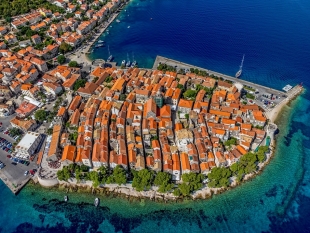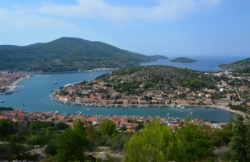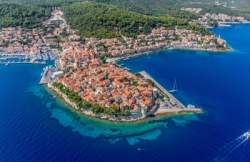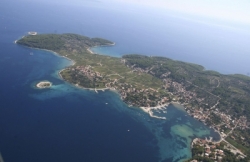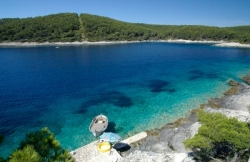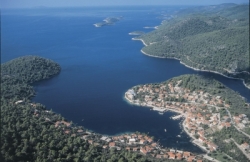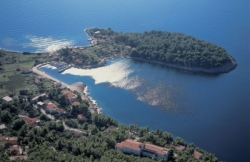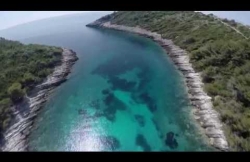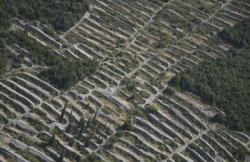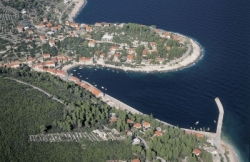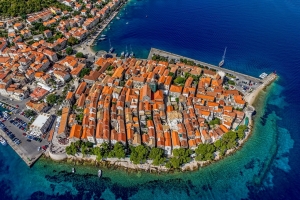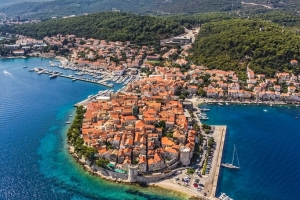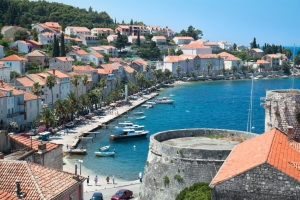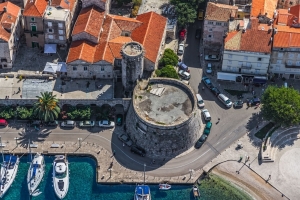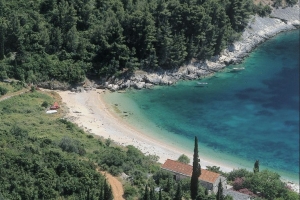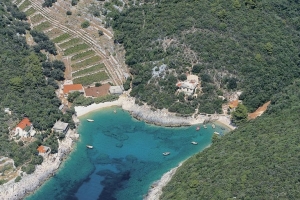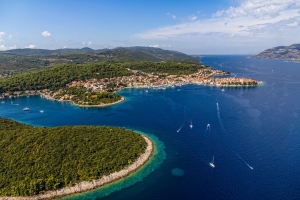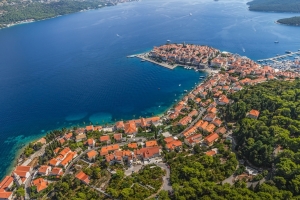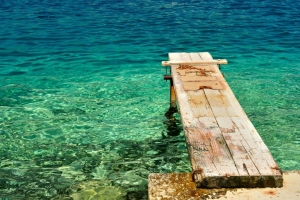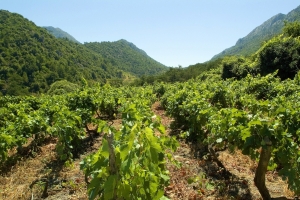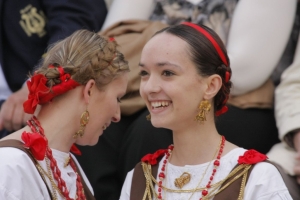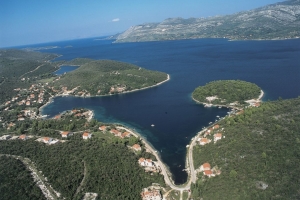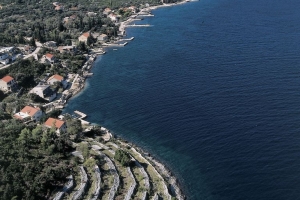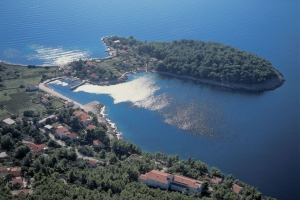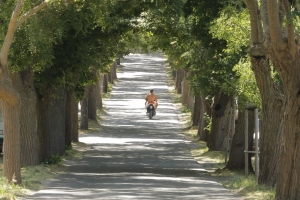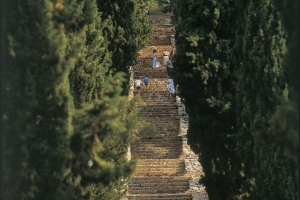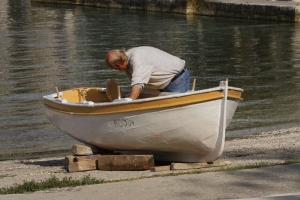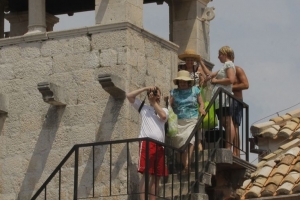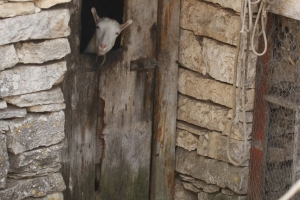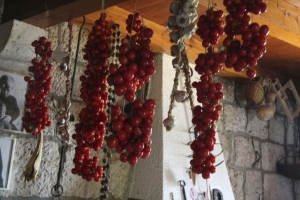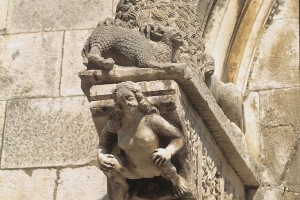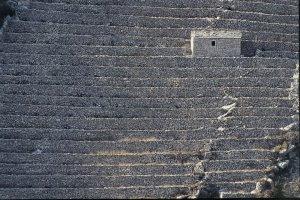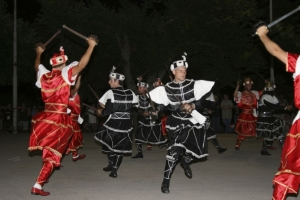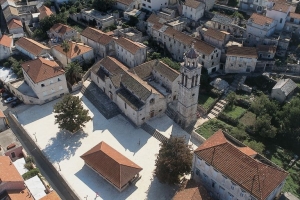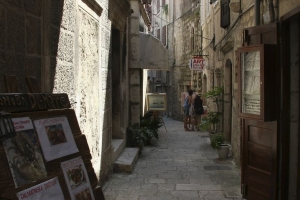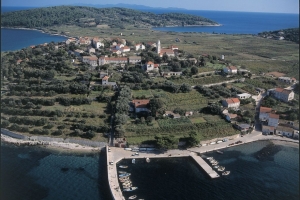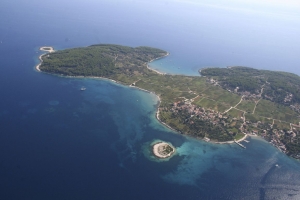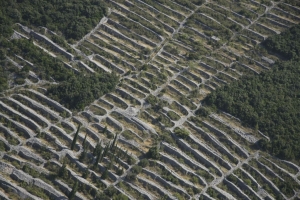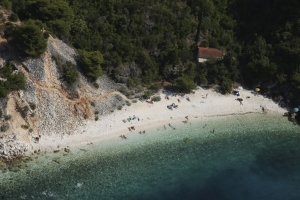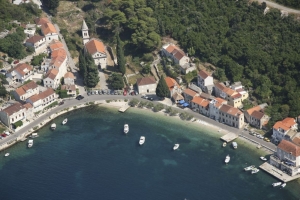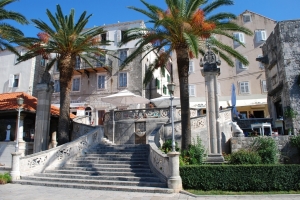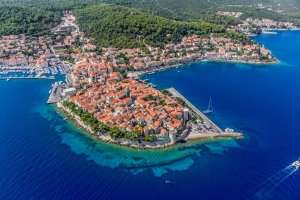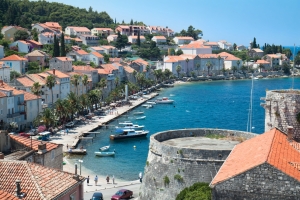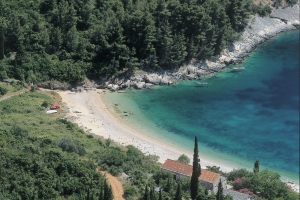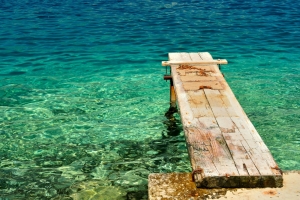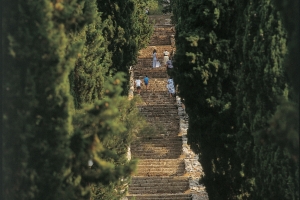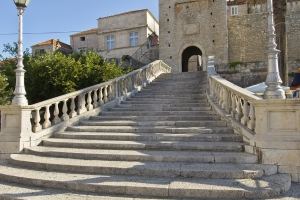Rolling green hills, undulating pine forests, a pronounced sub-tropical vegetation, beautiful beaches and wonderful bays are characteristic of the island: The wooded island of Korcula is justly known by the locals as the "Green Island". The 279 km ² island is not only the most beautiful but also one of the largest and most densely populated islands of Dalmatia. Approximately 17,000 people live and work here, of which about one-third live in the same beautiful, medieval-themed island's capital in the east. Korcula is best known as being the birthplace of world traveler Marco Polo. Besides lush greenery and stunning forests, there are citrus fruits, wine and olives that thrive on Korcula The climate is mild the whole year-round, with an average of fewer than 300 days of sunshine per year. All this sun is perfect for both the subtropical vegetation as well as for relaxing beach holidays. Typical of Korcula are its traditional summer performances, such as the sword dance Moreska, originally from North Africa.
Beaches and Bays on Korcula
On Korcula there are many idyllic bays to explore, where visitors can enjoy the sun and swim in the crystal clear waters of the Adriatic. The Pupnat Bay on the south side of the island is a hidden, tourist treasure encompassed by deeply incised and towering mountains. A beautiful pebble beach and crystal clear waters provide the best conditions for spending a great swimming day with the whole family. Vela Przina and Bili Zal are two very popular sandy beaches located near the picturesque village of Lumbarda in the east of the island. In particular, "Bili Zal", located north of Lumbarda, is admirable for its impressive panoramic view of the mountains of the neighboring peninsula Peljesac. Vela Pržina is located in an open bay and offers a magnificent view of the neighboring island of Lastovo. Those seeking peace and solitude, will find both in the very tucked-away Bratinja Luka cove near Zrnovo. In the Brna Bay and the village
Rolling green hills, undulating pine forests, a pronounced sub-tropical vegetation, beautiful beaches and wonderful bays are characteristic of the island: The wooded island of Korcula is justly known by the locals as the "Green Island". The 279 km ² island is not only the most beautiful but also one of the largest and most densely populated islands of Dalmatia. Approximately 17,000 people live and work here, of which about one-third live in the same beautiful, medieval-themed island's capital in the east. Korcula is best known as being the birthplace of world traveler Marco Polo. Besides lush greenery and stunning forests, there are citrus fruits, wine and olives that thrive on Korcula The climate is mild the whole year-round, with an average of fewer than 300 days of sunshine per year. All this sun is perfect for both the subtropical vegetation as well as for relaxing beach holidays. Typical of Korcula are its traditional summer performances, such as the sword dance Moreska, originally from North Africa.
Beaches and Bays on Korcula
On Korcula there are many idyllic bays to explore, where visitors can enjoy the sun and swim in the crystal clear waters of the Adriatic. The Pupnat Bay on the south side of the island is a hidden, tourist treasure encompassed by deeply incised and towering mountains. A beautiful pebble beach and crystal clear waters provide the best conditions for spending a great swimming day with the whole family. Vela Przina and Bili Zal are two very popular sandy beaches located near the picturesque village of Lumbarda in the east of the island. In particular, "Bili Zal", located north of Lumbarda, is admirable for its impressive panoramic view of the mountains of the neighboring peninsula Peljesac. Vela Pržina is located in an open bay and offers a magnificent view of the neighboring island of Lastovo. Those seeking peace and solitude, will find both in the very tucked-away Bratinja Luka cove near Zrnovo. In the Brna Bay and the village you can enjoy a relaxing swim and sunbathing. Additional beautiful days by the sea that each promise a natural landscape surrounding and subtropical coves are Uvala Karbuni, Uvala Rasohatica, Uvala Spliska, Uvala Stratincica and Uvala Vrbovica. "Uvala" is the Croatian word for "bay". Also Tri Porte- a common name for the three picturesque bays south of Vela Luka- has one of the most beautiful natural landscapes on the island. Those wanting to visit the wonderfully idyllic and deeply set in Orlanduša Bay must gain access with the only road- a three kilometer long gravel road. But the trip is well worth it because when arriving from the road, it opens up to a natural paradise. Here you can admire the 100 meter high mountain slopes with a wonderful view of the neighboring islands of Lastovo and Vis.
Sites and Monuments
In the east port town of Korcula where there are approximately 5000 inhabitants, both tourism and culture are of central importance. Korcula town boasts a beautifully preserved medieval town center in which you feel as if you have been transported some 500 years back in time. Particularly worth seeing is the Mark's Cathedral, as well as the (presumed) birth house of the famous Chinese traveler Marco Polo (1254-1324). Korcula is only about half an hour away away from the neighboring Orebic resort on the mainland and less often approached from Split and Dubrovnik. To the west lies the port of Vela Luka, the second largest city of the island. The town is embedded in a large and deeply indented bay, hence the name (Grand Bay) and has from its port regular ferry routes to Split. The place is admired for its beautiful pebble beaches and other secluded bathing destinations on the island. The third largest city, Blato, is nestled between picturesque hills and is interiorly located on the road between Korcula city and Vela Luka. The romantic streets and medieval architecture - especially the Romanesque church Svi Sveti from the 14th century - exude a very special Mediterranean charm.
Although Blato itself is not a resort, the popular resorts Prizba, Grscica and Crnja Luka in the southern portion of Korcula island belong to the community of Blato. About seven kilometers from Blato, in a northerly direction, there is the Prigradica harbor. Here, the visitor will be enticed by its fascinating rocky coastline with many tucked-away coves. Also not far away is the picturesque Zaglav Bay where one can find many idyllic hiking trails in the vicinity. Also located on the northern coast are the bays near Racisce- they are regarded as secret! Other towns in the interior of the island are Smokvica and Cara. In Cara there is a fortress originating from the 17th-century that is an impressive witness to the turbulent and warlike history of Croatia. Zrnovo on the other hand is the home of the stonemasons who among other things built the traditional stone-tiled houses that you see from the local high-grade limestone. To the north, the bays of Zrnovska Banja and Tri Zala can be found. Zrnovska Banja is mainly very popular with surfers. The small seaside Zavalatica resort nearby to Cara is an enchanting, embedded natural bay and enjoys particularly popularity with families. Other island towns such as Danca, Gradina, Knez, Mikulina Luka or Medvinjak offer not only a wide range of well-kept vacation home rentals, but also numerous leisure and sporting activities.
How to get there
Korcula, the "Black Corfu" off the coast of southern Dalmatia is very easily accessible all year round via the daily and various ferry routes. Most ships belong to the Jadrolinija ship company, as well as the car ferry route 604 that connects Ubli (Lastovo) with the ports of Vela Luka (Korcula) and Split. The ship goes from Korcula to Split twice a day and three times a day to Ubli – Vela Luka itself is stopped in four times per day. The crossing to Ubli takes up to two hours and the route to Split takes about two hours and 45 minutes. That is more than enough time to enjoy the magnificent archipelago, the blue of the sky and the fresh sea and ocean breeze. The catamarans that are chiefly used in the high season run much more quickly. Route 9604 connects Ubli, Vela Luka, Hvar and Split daily. The crossing from Korcula to Hvar takes just under an hour and the route from Hvar to Split also takes about an hour. Also, once a day, the route number 9608 makes its way in just over three hours from Korcula (town) on Prigradica (Korcula) over Hvar to Split. The catamaran is wonderful for day trippers without a car - as well as the route 9608S which only circulates in the high season. It brings visitors up to three times a day from Split via Hvar to Korcula and back. Another car ferry from the Jadrolinija company connects Domince in the northeast of Korcula with Orebic on the Peljesac peninsula. The crossing only takes about 20 minutes with the route number 634. This ferry can be used 14 times per day in the low season and up to 18 times per day during peak season. This very short and convenient connection has only one catch: motorists must first go through a set of challenging routes in the south of the peninsula, in order to transfer from Korcula. The same disadvantage is also present in the Domince-Drvenik connection: The short and affordable, three times a day crossing of route number 641 operated by the LNP ship company precludes a long and nerve-wrecking drive to the ferry terminal on the mainland.
zatvori








 Best of Croatia
Best of Croatia









